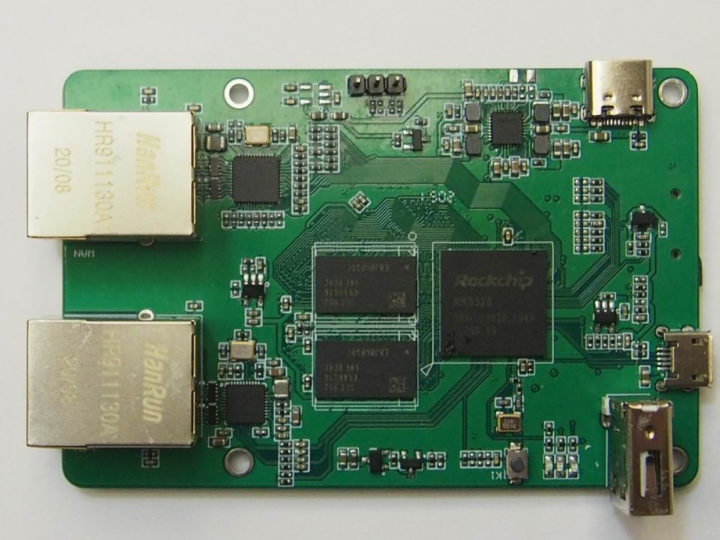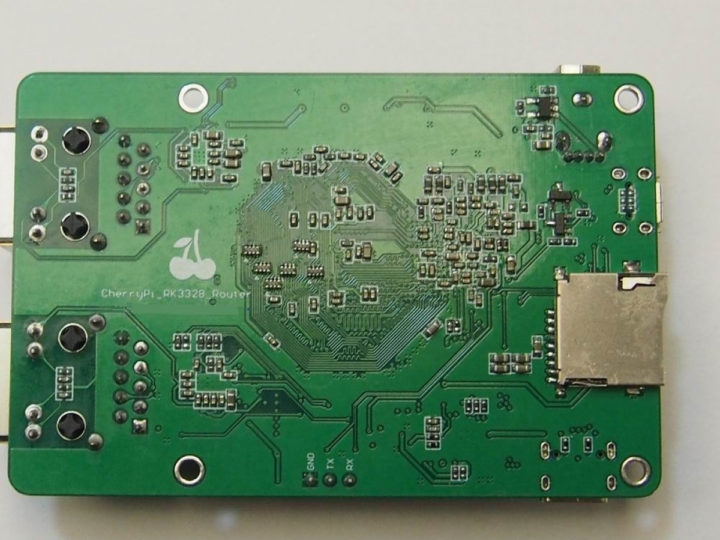We’ve previously reported about at least two dual GbE router boards based on Rockchip RK3328 quad-core Cortex-A53 processor with namely NanoPi R2S and Orange Pi R1 Plus.
But there’s now a third option with SmartHomeBoard Pi-R2S3328-B single board computer offered in a larger business card-sized format, equipped with 1GB DDR4, and booting OpenWrt from a MicroSD card. Debian and Ubuntu are also supported according to the manufacturer.
Specifications:
- SoC – Rockchip RK3328 quad-core Cortex-A53 @ 1.5 GHz with Arm Mali-450MP2
- System Memory – 1GB DDR4 RAM (Note some photos how 2x 512MB DDR3 instead)
- Storage – MicroSD Slot
- Connectivity -2x Gigabit Ethernet RJ45 ports, one native, one USB 3.0 to GbE
- USB – 1x USB Type-A host port, 1x micro USB OTG port, 1x USB Type-C port for power
- Debugging – 3-pin 2.54mm pitch header for serial console
- Misc – Reset button, Sys,WAN and LAN LED’s,
- Power Supply – 5V/2A via USB-C port
- Dimensions – 85 x 56 mm
- Weight – 52 grams
We learned about the board through LinuxGizmos who said they got the news from Shenzhen Pumpb Technical Co., Ltd who worked in collaboration with Xihai Imp. & Exp. Co., Ltd to bring this board (and others) to market.
But the silkscreen on the bottom side of the board reads “CherrryPi_RK3328_router”, so it appears to be related to the Cherry Pi PC SBC we wrote about last February, and that is indeed promoted as a new board by SmartHomeBoard using “Pi-PC-H3 PK” model number.
To bring even more confusion, the OpenWrt OS running on SmartHomeBoard Pi-R2S3328-B board is FriendlyWrt distribution, a fork of OpenWrt, maintained by FriendlyELEC that sells its own NanoPi R2S board as we previously mentioned.
Pricing was not mentioned about the board, and you’ll find more details on the product page. Inquiring minds may also be interested in the New Products page listing some other “new” boards.

Jean-Luc started CNX Software in 2010 as a part-time endeavor, before quitting his job as a software engineering manager, and starting to write daily news, and reviews full time later in 2011.
Support CNX Software! Donate via cryptocurrencies, become a Patron on Patreon, or purchase goods on Amazon or Aliexpress






